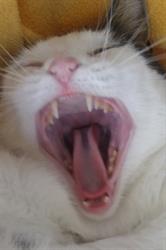Veterinary Dentistry: Services to Offer Pet Owners

Services
The types of training programs open to veterinarians include advanced dental options that apply concepts akin to those utilized in human care. The following information provides an overview of six of the types of therapy services that can be offered by a specialist in veterinary dentistry.
- Endodontic
- Covers therapies needed that involves the pulp of the tooth, the area found inside of the tooth consisting of the nerves and blood vessels
- Involves treating dental issues, such as:
- Fractured teeth
- Lost teeth
- Abscesses
- Abraded teeth
- Includes performing therapeutic procedures, including:
- Standard root canal
- Surgical root canal
- Direct pulp capping
- Indirect pulp capping
- Apexification
- Periodontics
- Involves treatments of periodontal disease, the most common clinical dental condition that occurs in dogs and cats.
- Involves performing therapeutic procedures, including:
- Oral examination
- Dental radiograph, reading, and diagnosing
- Dental scaling and polishing
- Gum surgery
- Root planing/curettage
- Advanced periodontal surgeries, such as bone regeneration
- Orthodontics
- Consists of therapies to correct dental and skeletal malocclusions through the use of surgery and orthodontic appliances
- Involves identification and evaluation of issues such as:
- Classes of occlusion
- Facial symmetry
- Angle of temporal mandibular joint
- Causes of misaligned teeth
- Includes performing therapeutic procedures, for example:
- Proper placement of braces to correct dental malformation
- Removal of retained primary teeth that impede tooth growth
- Performing therapeutic procedures to provide a functional bits
- Interceptive orthodontics
- Prosthodontics
- Includes performing therapeutic procedures that use advanced dental methods consisting of reconstruction and implants
- Treatments using prosthodontics provide a means of making damaged teeth stronger, for example:
- Reduces the chance for fractures or breakage of teeth that have excessive wear
- Eliminates or reduces the pain caused by teeth with exposed nerves and pulp
- Lessens the need to remove a tooth that has been fractured or broken
- Prosthodontic implants offer a way to restore the function of a tooth that is missing.
- Oral and Maxillofacial Surgery
- Often includes treatment of facial trauma
- Involves therapeutic procedures used to treat, for example:
- Tooth extractions
- Palate defects
- Oral tumor resection
- Repairing complex jaw fractures
- Jaw fracture reconstruction.
- Oral and Maxillofacial Radiology
- Offers the ability to utilize radiographic studies and dental charting
- Can provide advanced imaging information to help determine the best method for treating maxillofacial trauma in animals with oral tumors
Information Available to Clients
Offering clients options that focus on the care and treatment plan for their pet also requires providing information that considers the background and level of expertise of the person that will complete their pet’s dentistry procedure. General veterinarians often refer clients to a veterinary dentist for a pet’s oral health care, but many veterinarians are now completing the advanced care and technology training to be able to offer these services in-house.
If you’re interested in learning about the different types of veterinary specialties and their certification requirements , visit the American Veterinary Medical Association (AVMA) for information. The website identifies basic details, including:
- List of Board recognized veterinary specialties and their descriptions
- Explanation of requirements for a veterinarian to become a specialist
- Links to additional information, for example:
- The link for dentistry takes clients to the home page of the American Veterinary Dental College (AVDC) which offers information on, for example:
- The certification program for dental specialists
- Client tips for good pet dental care
Having the information to provide to clients when offering advanced care and technology for their pet's dental needs is important. Contact your Covetrus representative today at 855.724.3461 to learn more.
Sources:
http://www.avdc.org/ownersinfo.html
http://www.avdc.org/periodontaldisease.html
https://www.avma.org/public/YourVet/Pages/veterinary-specialists.aspx - The link for dentistry takes clients to the home page of the American Veterinary Dental College (AVDC) which offers information on, for example:


Working Here
Our team members are encouraged to be the best they can be... at Covetrus we believe we impact one another.
Learn MoreNews & Events
FDA Cautions Pet Owners Not to Feed Texas Tripe Inc. Raw Pet Food Due to Salmonella, Listeria Monocytogenes
The U.S. Food and Drug Administration is cautioning pet owners not to feed their pets any of the Texas Tripe brand raw frozen pet food listed below because several samples of Texas Tripe raw pet food have tested positive for Salmonella and/or L. mono.
Careers
Are you looking for a place to let your talents shine? At Covetrus, we help our practitioner customers better serve their patients and take pride in providing the best customer experience possible. Search our open positions to see our available opportunities.
Newsletter
Stay current with what’s going on with Covetrus, subscribe to receive our newsletter and email communications. Subscribers will receive the latest information in practice management, sales and marketing, animal health, and more.



-3-(1).png?sfvrsn=2d806d73_0)

Leave a comment